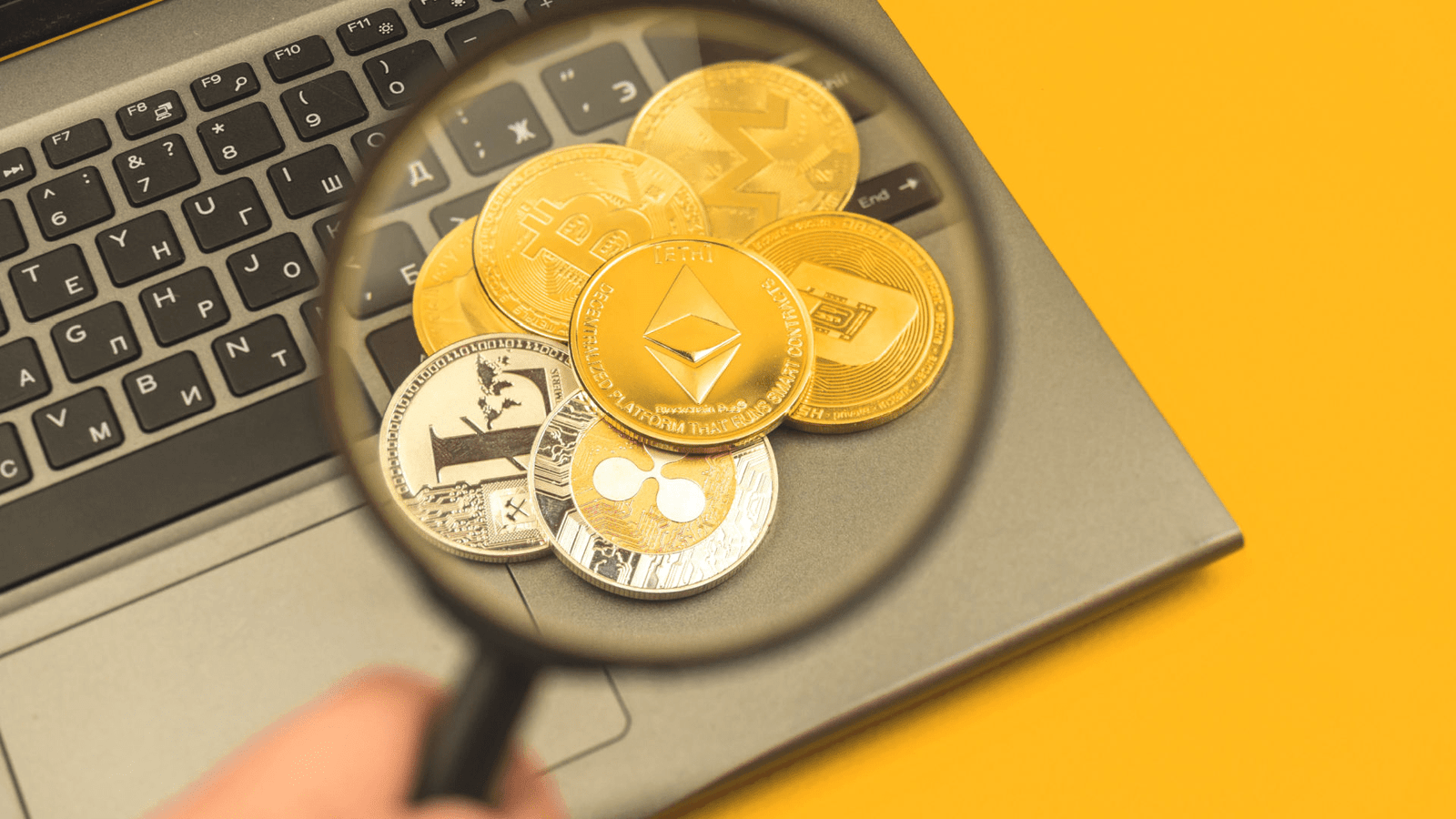After months of whiplash-inducing swings, the crypto consolidation phase continues to define market structure. Price ranges are tightening, neutral sentiment dominates trader psychology, and steady inflows from both retail and institutions hint at quiet accumulation beneath the surface. While the lack of explosive breakouts can feel uneventful, this kind of equilibrium often precedes decisive moves. In digital asset cycles, consolidations are not pauses without meaning—they are the periods where risk is repriced, conviction is tested, and the groundwork for the next trend is laid.
Today’s range-bound backdrop has a few distinctive features. Liquidity has improved at the top of the order book even as realized volatility moderates. Stablecoin supplies show cautious expansion, DeFi TVL has stabilized, and spot venues report consistent—if unspectacular—volumes. On the sentiment front, survey-based gauges and funding rates paint a picture of indecision rather than fear or greed.
Meanwhile, institutional inflows continue to trickle into diversified baskets and spot ETFs, reflecting longer-duration positioning rather than short-term speculation. Combined, these signals suggest that the market is in balance: buyers are absorbing supply without chasing price, while sellers are showing less urgency to hit bids.
What “Crypto Consolidation” Really Means
Structure, Time, and Participation
In market structure terms, crypto consolidation is a sideways drift where highs and lows compress, realized volatility declines, and participation shifts from momentum-driven traders to mean-reversion and accumulation-focused participants. In this environment, order books thicken near well-observed levels, liquidity providers tighten spreads, and funding rates tend to hover near flat as neither longs nor shorts command a premium. The price action communicates uncertainty but also equilibrium: it tells us that the market has found a “fair” value area—at least for now.
Time is the most underappreciated variable. Ranges that persist for weeks or months grind out both excess leverage and impatience. Each session that passes without a breakdown reduces downside tail risk by transferring coins from weak to stronger hands. On-chain metrics like coin day destroyed, dormancy, and exchange net flows often show a softening of selling pressure during these stretches, while long-term holders exhibit reduced spending.
The Psychology of Neutral Sentiment
Neutral sentiment is not apathy; it’s balance. Greed spikes when new highs arrive, fear spikes when cascading liquidations hit, but neutrality appears when the market is still discovering where value lies. Survey data, RSI readings clustered around midline levels, and option skews that lean neither heavily bearish nor bullish are hallmarks of this stance. Traders fade extremes near range boundaries, systematic strategies harvest carry in options and perpetuals, and macro-oriented investors wait for stronger signals.
Neutrality can be constructive because it lowers the probability of crowded trades. When positioning is not one-sided, shocks are less likely to produce cascade effects. That sets the stage for ranges to resolve on genuine catalysts rather than reflexive liquidations.
Why Steady Inflows Matter in a Sideways Market

Accumulation Without Headline Noise
When the tape is quiet but steady inflows continue, it implies that participants with longer horizons are comfortable scaling in. This can be seen through consistent net creations in spot ETFs, measured increases in AUM for diversified crypto funds, and slow, steady growth in stablecoin float. Inflows are the oxygen that keeps price from suffocating under supply. They don’t need to be dramatic; in a consolidation, a small but persistent demand surplus can defend key levels repeatedly.
The “Drip, Don’t Drown” Effect
In trending markets, inflows chase strength. In consolidations, inflows are patient and programmatic. Dollar-cost averaging frameworks, treasury allocations, and rebalancing policies often produce a predictable, low-beta bid that soaks up distribution without driving frenetic breakouts. This dynamic supports market cap stability and paves the way for a more explosive expansion when catalysts arrive because the supply overhang has been quietly reduced.
Macro Backdrop: Calm Seas With Cross-Currents
Rates, Liquidity, and Risk Appetite
Digital assets do not live in a vacuum. The path of policy rates, global liquidity, and the appetite for risk-on assets influences crypto via funding conditions and portfolio rotations. When rate volatility cools, discounted cash-flow assets and growth proxies typically regain favor. For crypto, calmer macro headwinds mean less forced deleveraging and a friendlier environment for institutional inflows to maintain pace.
Dollar, Commodities, and Correlations
A firm or weakening U.S. dollar can swing crypto correlations. During neutral sentiment periods, correlations with equities and commodities often fluctuate without a dominant regime. Range-bound equities and subdued commodity volatility can reinforce crypto’s own consolidation by limiting exogenous shocks. However, an unexpected dollar surge or risk-off episode can test the range’s lower bounds. In these moments, watch BTC dominance and cross-asset volatility indices to gauge stress transmission.
On-Chain Health: Quietly Resilient
Supply Dynamics and Holder Behavior
On-chain metrics offer nuanced insights during consolidations. Reduced exchange balances imply that holders prefer custody over immediate liquidity, signaling conviction. Rising long-term holder supply, muted spent output profit ratio around equilibrium, and declining young coin activity suggest a maturing base. When supply rotation slows, price discovery becomes less about urgent selling and more about negotiating a fair range.
Network Activity and Utility
Sideways price does not necessarily mean stagnant networks. Layer-2 scaling solutions continue to absorb throughput, DeFi TVL may stabilize or slowly rise as yields normalize, and NFT volumes can bottom before price trends inflect. If fees decline due to reduced speculation, that can lower barriers for real users. The net result: fundamentals quietly improve while the chart sleeps.
Derivatives: Reading the Term Structure and Skews
Funding, Basis, and Volatility Term Structure
In a classic crypto consolidation, perpetual funding rates oscillate near zero, indicating balanced leverage. Meanwhile, the futures basis is modest but positive, reflecting mildly constructive carry rather than euphoric demand. Options markets echo this posture: implied volatility compresses, the term structure is upward sloping, and skews drift toward neutral from prior extremes. More telling is the behavior at range edges—if IV refuses to spike on dips, it signals that downside hedging demand is contained and dealers are not scrambling.
Positioning and the Pain Trade
The longer a range persists, the more options premium sellers thrive, and the more directional traders get chopped up. This sets the stage for an eventual “pain trade” where the market moves in the direction that forces the most unwind. If the crowd leans too confidently on range-selling strategies, a catalyst can cause a swift repricing, with vega and gamma amplifying the break. Neutral sentiment and steady inflows tilt the probabilities toward an upside break over a disorderly collapse, but both paths remain open until confirmed.
Sector Rotation: Majors, Altcoins, and Narratives

BTC, ETH, and the Quality Trade
In consolidations, capital typically gravitates to quality. BTC dominance often inches higher as conservative capital prefers the asset with the deepest liquidity and cleanest macro narrative, from digital gold to treasury diversification. ETH benefits when staking economics and layer-2 adoption stabilize fee markets. Together, the majors set the tone: if their ranges hold well, the market’s core remains healthy.
Altcoins: Selectivity Over Scattershot
For altcoins, neutral conditions reward selectivity over scattershot speculation. Projects with clear catalysts—protocol upgrades, tokenomic improvements, or demonstrable on-chain utility—can outperform even without a broad risk-on surge. Meanwhile, illiquid names can languish as market makers tighten risk tolerances. Inflows that are steady rather than euphoric favor tokens with real users, predictable emissions, and credible roadmaps.
Microstructure: Order Books, Liquidity, and Slippage
Thickening Books and Tighter Spreads
As realized volatility falls, market makers tighten spreads, and order books often thicken at clustered levels. This improves execution quality and reduces slippage for patient participants. However, it also encourages mean-reversion behaviors that pin price within the range until a shock reorders incentives.
The Role of Stablecoins and Market Depth
Healthy stablecoin rails are vital in consolidations. Replenished stablecoin reserves at major venues indicate deployable dry powder, while consistent depth at 1% from mid-price suggests orderly conditions. Watch for sudden depth deterioration or widening spreads—those are early signs that the range could be vulnerable to a break.
Catalysts That Could Resolve the Range
Native Crypto Catalysts
A handful of crypto-native catalysts can jolt the market out of neutrality. A new spot ETF listing in a major jurisdiction, an unexpected protocol upgrade, or a security incident can reprice risk rapidly. Similarly, emerging use cases—payments integrations, gaming breakthroughs, or DeFi primitives with real cash flows—can reset the narrative and drive fresh capital.
Macro Surprises
Outside the crypto sphere, policy pivots, inflation surprises, or global risk events can steepen curves and light up correlations. Because the market is not levered to extremes in a neutral phase, it may withstand modest shocks. But outsized surprises can still force a range break. The direction depends on whether the surprise boosts or crimps global liquidity.
See More: Crypto Dip Bitcoin Ethereum & XRP Struggle Today
How Investors Navigate Neutral, Range-Bound Markets
Frameworks Over Predictions
A disciplined framework beats hero calls during crypto consolidation. Define the range, identify invalidation levels, and plan position sizing that acknowledges the market’s indecision. With neutral sentiment, overtrading is the primary hazard. Consider focusing on asymmetric setups rather than chasing every fluctuation.
Rebalancing, Cost Averaging, and Risk Controls
Rebalancing between majors and altcoins keeps risk aligned with conviction. Dollar-cost averaging can compound the benefits of steady inflows by harvesting time diversification. Protecting capital matters more than precision: use clear stop-losses, avoid excessive leverage, and remember that missing the first 5% of a breakout is less costly than fading a trend that just started.
Technical Context: Ranges, Midlines, and Momentum
Identifying the Value Area
In consolidations, price often oscillates around a volume-weighted value area or visible range point of control. Midline tests can be more informative than edge pokes because they reveal whether buyers or sellers are comfortable defending the heart of the range. RSI around 50 and flattening moving averages confirm the stalemate.
Breadth and Divergences
Market breadth metrics—advance/decline among majors and altcoins, leadership persistence, and cross-asset momentum—help spot early cracks. A narrowing leadership group with weakening breadth can warn of a downside resolution; improved breadth with rising new highs across sectors can foreshadow an upside break. In neutral environments, these subtle tells matter more than a single flashy candle.
Risk Management in a Neutral Market
Position Sizing and Patience
The enemy in neutral phases is boredom. Traders who size too large out of impatience turn small oscillations into big problems. Sizing positions to survive repeated range tests is essential. Risk should shrink at the edges and expand only after confirmation.
Hedging Without Overpaying
With implied volatility compressed, options can seem cheap—but carry still matters. Calendar spreads or limited-risk structures can protect without bleeding excessively if the range persists. Hedging should be purposeful: ensure tail risk, not every wiggle.
Long-Term Perspective: What Consolidation Sets Up
Base-Building and Future Trend Potential
Historically, durable advances often follow well-fought bases. Consolidations clear excesses, align expectations, and allow new narratives to take root. The presence of steady inflows during the base-building phase is particularly potent; it means that when a catalyst arrives, there is less overhead resistance and more capital ready to chase.
Signal Versus Noise
In an always-online market, noise is constant. A consolidation is an invitation to prioritize signal: network fundamentals, on-chain supply trends, real utility, and credible builders. Neutral sentiment can be a gift because it lowers the volume on hype and lets value speak louder.
Outlook Neutral Today, Optionality Tomorrow
The current mix—crypto consolidation, neutral sentiment, and steady inflows—is not a forecast of perpetual sideways motion. It is a snapshot of a market conserving energy. The balance can persist until fresh information arrives, but the groundwork is visible: resilient liquidity, ongoing adoption, and patient capital.
If the range breaks higher, it will likely be because the base of demand built during this quiet period meets a catalyst that rekindles momentum. If it breaks lower, it will likely be due to macro shock or a failure in market structure, in which case positioning is modest enough to absorb the blow and rebuild. Either way, investors who respect the range, embrace patience, and watch the right signals are positioned to act when optionality turns into trend.
Conclusion
Consolidation is neither glamorous nor meaningless. In crypto, it is often the chapter where the next story is quietly written. Neutral sentiment tempers leverage and keeps narrative excess at bay. Steady inflows provide the soft, continuous bid that prevents breakdowns and methodically transfers supply to stronger hands.
Beneath the sideways price action, on-chain metrics stabilize, derivatives calm down, and liquidity finds equilibrium. Whether the next move is a breakout or a shakeout, this phase equips patient participants with clarity, cleaner risk, and higher-quality signals. For builders and long-term investors alike, these are the weeks that can define the next leg of the cycle.
FAQs
Q: Is neutral sentiment bearish or bullish for crypto?
Neutral sentiment is neither inherently bearish nor bullish. It reflects a balance between buyers and sellers. In a consolidation, neutrality can be constructive because it reduces crowded positioning and the risk of cascade liquidations. Combined with steady inflows, neutrality often precedes a healthier upside resolution once catalysts appear.
Q: How do steady inflows affect price during consolidation?
Steady inflows act as a persistent demand source that absorbs selling without driving parabolic moves. They support key levels, reduce downside tail risk, and quietly lower overhead supply. When a catalyst arrives, the market can respond more explosively because the base of demand is already in place.
Q: What on-chain signals matter most in a range?
Watch exchange balances, long-term holder supply, and exchange net flows to gauge selling pressure. Also monitor activity on layer-2 networks, DeFi TVL, and stablecoin supply. Stability or slow improvement in these indicators over a range suggests accumulation and network health.
Q: How should I trade a consolidating market?
Define the range, size positions conservatively, and avoid overtrading. Consider dollar-cost averaging for long-term entries and use clear invalidation points. In derivatives, be mindful that selling premium can work until it doesn’t; plan for a potential “pain trade” if the range breaks.
Q: Which sectors might lead when the range resolves?
Leadership often starts with majors—BTC and ETH—because of liquidity and narrative clarity. As confidence builds, capital rotates into select altcoins with real catalysts: protocol upgrades, improved tokenomics, or proven on-chain utility. Projects with durable fundamentals usually outperform when a new trend begins.




















